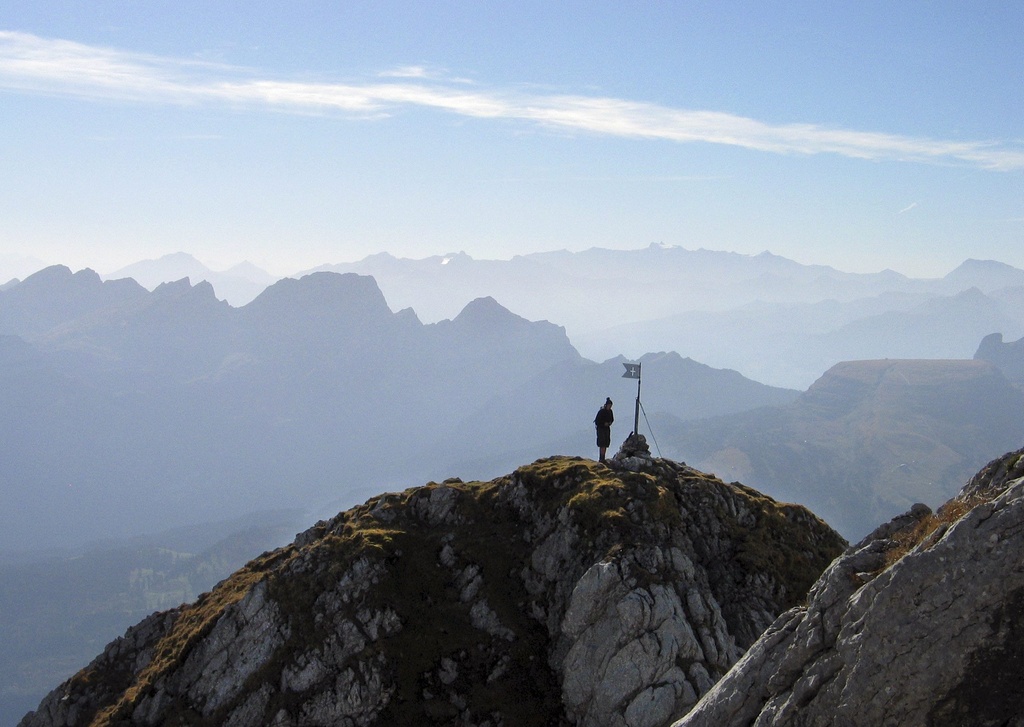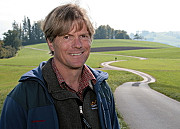“A window into the borderlands”

When is a people a nation, a border a boundary? Can I find out by encircling a small multilingual country with vast borders, one footstep at a time?
And what about those mountains: Can I possibly climb them all in one summer? Border Stories layers a challenging physical adventure over an exploration of the history, culture, and environment of one of the most fascinating places on earth: Switzerland.
I’ve been enthralled with Switzerland ever since I moved there from Germany at the age of seven, in 1963. After three years I had become nearly Swiss, but then my father died while climbing the Eiger and my family moved to America. But Switzerland never left my soul, and I’ve returned year after year, most notably to climb the Eiger myself in 2005. That journey was chronicled in the IMAX movie, The Alps: Climb of Your Life, and in my book, The Eiger Obsession: Facing the Mountain That Killed My Father.
Emotionally, nothing will top climbing the north face of the Eiger—and out of Dad’s legendary shadow. But I’ve long had another dream also, much bigger and higher: to make a complete circumnavigation of Switzerland, staying exactly on the border and climbing each of the hundreds of summits that divide my former homeland from its neighbours. I am now taking on that challenge.
The borderline
Officially, Switzerland’s borders with France, Germany, Liechtenstein, Austria, and Italy span 1,858 kilometres (1,150 miles). In real life, those two-dimensional map distances mean little; the vertical relief tremendously increases the actual kilometres on the ground, as well as the difficultly of walking them.
According to simple map-distances, I’ll cover roughly 800 kilometres by bicycle and kayak and 1,000++ kilometres on foot—including lots of technical climbing over difficult mountains (for example, the hardest ridge on the Matterhorn).
But the physical adventure is merely a personal challenge, good for a few stories (especially when things go wrong). The real depth of this journey will be its window into the borderlands.
Why is THIS Switzerland?
From Julius Caesar’s forts on the Rhine to today’s fighter jets hidden in caves, from a tribal alliance in 1291 to women’s suffrage in 1971, from fielding mercenary armies to being the world’s icon of peaceful neutrality, from poverty to riches: Switzerland long has been at the paradoxical heart of Western history.
And above all, I will wonder: Why is THIS Switzerland? With four national languages (and dozens of dialects), why is the border here and not there? Is an Italian-speaking Swiss more or less like his German-speaking countryman than an actual Italian on the other side of the ridge? What does this say about each of us—no matter which country claims us by accident of birth?
History is a collection of stories, about people and places. After three months on the borderline in the company of experts and friends, I’ll have a few tales to recount, including my own.
John Harlin III


In compliance with the JTI standards
More: SWI swissinfo.ch certified by the Journalism Trust Initiative

You can find an overview of ongoing debates with our journalists here. Please join us!
If you want to start a conversation about a topic raised in this article or want to report factual errors, email us at english@swissinfo.ch.